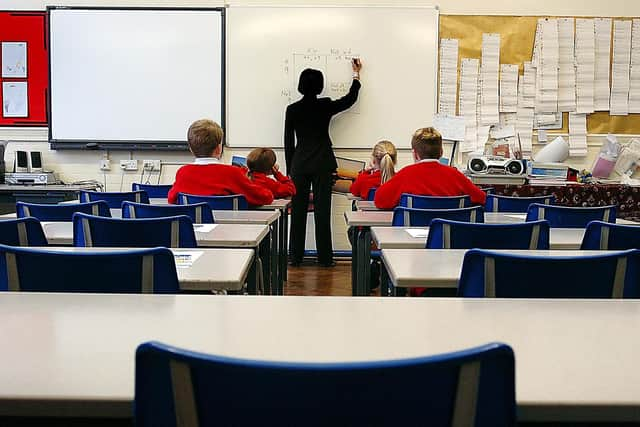Calderdale children catching COVID at home rather than at school health board is told
and live on Freeview channel 276
Consultant in Public Health, Ben Leaman, who has played a major role working with schools through the pandemic, told Calderdale Council’s Children and Young People’s Scrutiny Board that adults could help reduce the risk.
“Most young people who catch COVID catch it at home, not school – a reduction in community transmission is really the key,” he said.
Advertisement
Hide AdAdvertisement
Hide AdThis meant following the three major guidelines of avoiding mixing with anyone outside your household or bubble, wearing a face covering in all indoor settings where you might come into contact with someone from outside your household or bubble and isolating at home if you or someone else you live with has COVID-19 symptoms or you have been advised to do this by the NHS.


“If the adults do all this there will be less closures of schools,” said Mr Leaman.
He said it should not be underestimated how important the role schools had played in helping the authority manage the pandemic.
“The response by Calderdale schools has been exceptional,” he said.
Advertisement
Hide AdAdvertisement
Hide AdDirector of Children and Young People’s Services, Julie Jenkins, said 99 per cent of Calderdale’s schools were open on December 2, with just one which would remain closed until December 7.
This was Riverside School at Hebden Bridge, where 104 of the 150 children were isolating at the moment, she said.
It showed how quickly a situation could be become unsustainable in terms of keeping a school open.
As of December 2, 63 per cent of Calderdale’s schools were not affected by bubble isolation and school closures.
Advertisement
Hide AdAdvertisement
Hide Ad“That’s higher than it has been, with less closed,” said Ms Jenkins, adding that December 1 had seen 83 per cent of children in school.
Lesley Bowyer, Interim Assistant Director for Education and Inclusion, said pressures were still fast-changing and this was reflected in schools’ risk assessments.
“Most bubble or year group closures are where there is a small number of cases, usually not linked but because there is a need to self-isolate.
“We can contact people very quickly which means bubbles do need to isolate,” she said.
Advertisement
Hide AdAdvertisement
Hide AdIn terms of staff, Ms Bowyer said 92 per cent of teachers were in school this week.
The biggest concern for headteachers remained supply cover which brought both financial issues and the concern supply teachers moving around a number of schools posed a higher risk of spreading COVID-19, the committee heard.
In some instances there were also concerns about how exams and assessments would take place next year.
Ofsted inspections of schools were also set to resume in February, the committee was told.
The board also heard information about “catching up” programmes were being shared with schools.
Comment Guidelines
National World encourages reader discussion on our stories. User feedback, insights and back-and-forth exchanges add a rich layer of context to reporting. Please review our Community Guidelines before commenting.